 W
WThe Ambassador Hotel was a hotel in Los Angeles, California. Designed by architect Myron Hunt, the Ambassador Hotel formally opened to the public on January 1, 1921. With its Mediterranean styling, tile floors, Italian stone fireplaces and semi-tropical courtyard, the Ambassador enchanted guests for over six decades. Later renovations by architect Paul Williams were made to the hotel in the late 1940s. It was also home to the Cocoanut Grove nightclub, Los Angeles’ premier night spot for decades; host to six Oscar ceremonies and to every United States President from Herbert Hoover to Richard Nixon.
 W
WThe Augustinian Academy on Staten Island, New York, was founded on May 30, 1899, in conjunction with the new Roman Catholic parish of Our Lady of Good Counsel, both by the Augustinian Friars. The buildings were originally erected for the Visitation Sisters, and were purchased and modified by the Augustinians for educational purposes. The academy buildings were dedicated by Bishop Sebastiano Martinelli on September 10, 1899, and officially opened on September 13, 1899, as "The Catholic High School of Richmond Borough". This was the first Catholic settlement in Tompkinsville, and the first Mass was said in the neighborhood on November 12, 1899, in McRobert's Hall on Arietta Street. Our Lady of Good Counsel occupied the large chapel in the academy building, along with the small chapel of Our Lady of Consolation, erected in 1902 on St. Paul's Avenue.
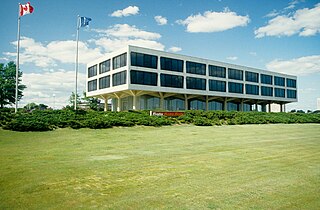 W
WThe Bata Shoes Head Office in Toronto, Ontario, Canada, was Bata Shoes' former headquarters. The white, pavilion-like building, designed by architect John B. Parkin and completed in 1965 was considered by many as an example of the Modern Movement in architecture. Located atop a hill on Wynford Drive, by the major intersection of Eglinton Avenue and the Don Mills Road in the district of North York, its architecture and location made it a well-known landmark in the city. It was identified by the Toronto Society of Architects as one of 96 significant buildings and public spaces in Toronto built between 1953 and 2003.
 W
WThe Bethesda Chapel, Dublin, was a Episcopal Church of Ireland, church on Granby Row and Dorset Street, Dublin.
 W
WThe Bourne Windmill, Oakdale, New York was an American farm design tower windmill, built in 1911 by Commodore Frederic G Bourne, as part of a farm in Oakdale, New York. It was located north of his South Shore estate, known as Indian Neck Hall, which later became LaSalle Military Academy. The windmill was demolished in 2004–2005.
 W
WThe Cape St. George Light is a 72-foot (22 m) high brick lighthouse which had originally stood for 153 years on St. George Island, Florida, until toppling into the Gulf of Mexico October 22, 2005. The pieces of the lighthouse were retrieved, and in April 2008, the light's restoration was completed.
 W
WThe Chandeleur Island Light was a lighthouse established in 1848 near the northern end of the Chandeleur Islands in the Gulf of Mexico, off the east coast of Louisiana. Hurricane Katrina destroyed the light in 2005.
 W
WChase Mills Inn was a historic inn and tavern building located at Chase Mills in St. Lawrence County, New York. It was built about 1865 and is a two-story wood-sheathed structure with a principal three-bay mass and a two-story, two-bay wing. It features a low hipped roof and two porches.
 W
WThe Colonial Theater was a former cinema and stage theater in Allentown, Pennsylvania. Opened in 1920, for over 50 years it was considered the glamour cinema in the central business district. It closed in 1982, and was torn down in 2005 after years of being vacant and deteriorated. The site has been redeveloped as Three City Center, part of the Allentown Neighborhood Improvement Zone (NIZ).
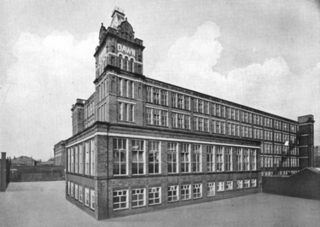 W
WDawn Mill, Shaw was a cotton spinning mill in Shaw and Crompton, Oldham, Greater Manchester. It was built on the site of Shaw Mill at the "dawn" of the 20th century. Dawn Mill was equipped with mule weft spindles in 1950. It was powered by Engines named Venus and Mars, 1800 hp twin tandem compound engine by George Saxon of Manchester. It was taken over by the Lancashire Cotton Corporation in the 1930s and passed to Courtaulds in 1964. It was sold again and used by distribution company DTS Logistics for storing and distributing clothing. It was demolished in 2006 to make way for an Asda supermarket.
 W
WThe Detroit Statler Hotel was a building located at 1539 Washington Boulevard across from Grand Circus Park between the David Whitney Building and the Hotel Tuller in Downtown Detroit, Michigan. In addition to Washington Boulevard, the hotel also fronted Bagley Street and Park Avenue.
 W
WThe Dupont Plaza Hotel was a major hotel in downtown Miami, Florida from 1957 until 2004. It occupied a section of the former site of the Royal Palm Hotel. The Dupont Plaza Hotel was the first major hotel of its generation built in downtown Miami since the collapse of the tourist boom in 1926. Popular till the 1960s, the Dupont Plaza Hotel was a coveted destination for domestic visitors. It did get a resurgence of interest in the 1980s and early 1990s, but then suffered some financial troubles.
 W
WThe Elks Club was a historic clubhouse building located at Parkersburg, Wood County, West Virginia. It was designed by architect William Howe Patton and built in 1903. It was a four-story, three-bay by six-bay wide, red brick building with terra cotta trim in the Classical Revival style. The first two stories were faced in smooth dressed stone, and feature arched apertures, with central consoles. It was occupied by the Parkersburg Lodge #198, Benevolent and Protective Order of Elks (B.P.O.E.)
 W
WGondwana Rainforest Sanctuary, created by the Joffe Group, was due to open on 20 June 1992 (but in fact opened a week later). It was set up as an Australian wildlife sanctuary and tourist attraction in the South Bank Parklands, in Brisbane, Queensland, Australia, following World Expo 88. There were about 500 animals at the sanctuary.
 W
WGrass Lawn, also known as the Milner House, was a two-story Antebellum home located in Gulfport, Harrison County, Mississippi. In 1972, the home was added to the National Register of Historic Places. In 2005, the home was destroyed during Hurricane Katrina. A replica of Grass Lawn, Grasslawn II, was built and was designated a Mississippi Landmark in 2010. The new structure was dedicated in 2012 for use in city events, weddings, receptions, and parties.
 W
WHumphreys Boat Shed was a heritage-listed workshop and slipway at Seaworld Drive, Main Beach, Queensland, Australia. It was added to the Queensland Heritage Register on 31 August 2001, but was removed in June 2015 having been destroyed. However the remnants of the boat shed and slipway are listed on the Gold Coast Local Heritage Register.
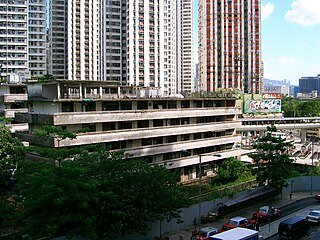 W
WJordan Valley Factory Estate was a factory estate in Jordan Valley, Ngau Tau Kok, Kowloon, Hong Kong, owned and managed by the Hong Kong Housing Authority. It was built in 1959. In 1983, its west wing was demolished to construct the new Ngau Tau Kok Bus Terminus. The remaining buildings were cleared in 2004 and demolished in 2005.
 W
WThe Lancaster and Waumbek Apartments were small apartment buildings respectively located at 227-29 and 237-39 East Palmer Avenue in Detroit, Michigan. The apartments were listed on the National Register of Historic Places in 1997. They were demolished in November 2005.
 W
WLinden Flats was located in downtown Davenport, Iowa, United States. It was individually listed on the National Register of Historic Places, and included as a contributing property in the West Third Street Historic District in 1983. The building was torn down after it was destroyed in a fire in 2005.
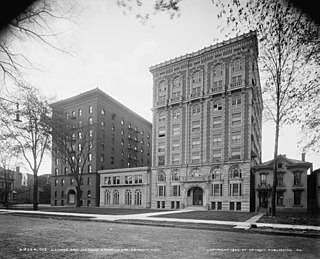 W
WThe Madison-Lenox Hotel was a hotel complex located at 200-246 Madison Street in Detroit, Michigan.
 W
WThe Mathematics Building in Manchester, England, was a university building which housed the Mathematics Department of the Victoria University of Manchester and briefly the newly amalgamated University of Manchester from 1968 to 2004. The building consisted of a three-storey podium and an 18-storey 75 metre tower. It was designed by local architect Scherrer and Hicks in a quirky combination of 1960s-brutalism and international style modernism architecture. It was demolished in 2005 as the maths department moved to the Alan Turing Building on Upper Brook Street.
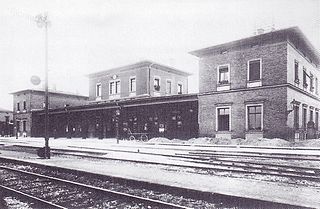 W
WMünchen Süd is a disused railway station and a railway goods station in the Munich borough of Ludwigsvorstadt-Isarvorstadt. Train service stopped on July 1, 1985, the last buildings were demolished in 2005 to make room for office buildings.
 W
WPebble Mill Studios was the BBC's television studio complex located in Edgbaston, Birmingham, England, United Kingdom, which served as the headquarters for BBC Birmingham from 1971 until 2004. The nine-acre site was opened by Princess Anne on 10 June 1971, and in addition to the studios contained two canteens, a post office, gardens, a seven-storey office block, and an outside broadcasting (OB) base.
 W
WThe Pink Poodle was an iconic motel in Surfers Paradise, Queensland, Australia. It was located on the corner of Fern Street and the Gold Coast Highway. Although no longer extant, its signage remains and is listed on the Gold Coast Local Heritage Register.
 W
WThe Birmingham Post and Mail building was constructed in the 1960s and was a symbol of the rebuilding of Birmingham, England, following the devastation of World War II.
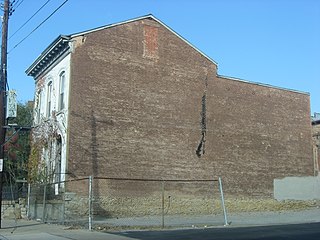 W
WThe Heinrich A. Rattermann House was a historic residence in the West End neighborhood of Cincinnati, Ohio, United States. Built in 1860, it was a brick building with a stone foundation and elements of iron and stone. It was the home of Heinrich Armin Rattermann from 1895 until his 1923 death. The most prominent German-American author in the history of the United States, Ratterman worked to solidify German-American culture; he sought to teach his compatriots their culture and produced a history of German Americans in Ohio.
 W
WRural Home, also known as the Fitzgerald House, was a plantation house in Clayton County, Georgia. Built in the 1830s, the house was acquired by Philip Fitzgerald, a planter and Irish immigrant, in 1836. Rural Home was the childhood home of Annie Fitzgerald Stephens, the grandmother of author Margaret Mitchell, and was the center of a large cotton plantation. The plantation served as inspiration for Mitchell's fictional Tara Plantation in her novel Gone With the Wind. It was looted but ultimately withstood Sherman's March to the Sea during the American Civil War and functioned as a family home until the 1970s. In 1982 it was moved to a temporary site near Lovejoy. After being badly damaged in a storm, the house was demolished in 2005.
 W
WSheaf House was a nine-storey tower building by Sheaf Square, next to Sheffield railway station, in the centre of Sheffield, in South Yorkshire, England. The building was formerly the Sheffield area headquarters of British Rail.
 W
WShelton Bar was a 400-acre (1.6 km2) major steelworks in the city of Stoke-on-Trent, Staffordshire, England. In its heyday, Shelton Bar employed 10,000 in the steelworks, had five coal mines, a complete railway system, and a by-products processing factory.
 W
WShip Island Light was a lighthouse in Mississippi near Gulfport.
 W
WSchilling Power Station was an oil-fired power station in the proximity of the nuclear power station at Stade. It went into operation in 1960, was extended in 1962 and 1964, and was shut down in the 1980s. Since it principally served Hamburg north for the electricity supply of Hamburg and fed its current into the transformer station, the first overhead line crossing of the Elbe was built at that time at Stade, the Elbe Crossing 1. The buildings still exist today and are occasionally used for disaster control exercises.
 W
WThe Stöberhai is a mountain the Harz highlands in Central Germany, immediately south of the Oder Dam and northwest of Wieda. At a height of 720 m above sea level (NN) it is the highest mountain in the South Harz. The origin of the name is uncertain, but it is suggested, that a charcoal burner called Stöber may have had his charcoal store (Hai) here.
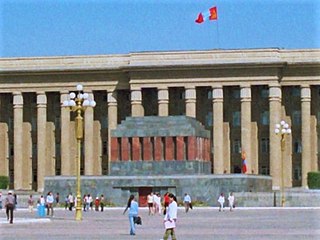 W
WSükhbaatar's Mausoleum was a mausoleum for Damdin Sükhbaatar, leader of Mongolia's 1921 revolution, and Khorloogiin Choibalsan, head of Mongolia's government from the late 1930s to his death in 1952, in Mongolia's capital Ulaanbaatar, on the northern side of Sükhbaatar Square in front of the Saaral Ordon. The building was erected after Choibalsan's death, and removed in 2005 to make place for a hall dedicated to Genghis Khan. The mausoleum resembled the shape of Lenin's Mausoleum but differed in color. The mausoleum has never been opened for public visits.
 W
WThe Tampa Bay Center was a shopping mall located in Tampa, Florida, across the street from Tampa Stadium. The mall was developed by The Rouse Company. When it opened on August 5, 1976 the 877,000-square-foot (81,500 m2) Tampa Bay Center was Tampa's fourth major mall and operated until 2001, when most of its tenants relocated to the nearby International Plaza. The mall was a two-story building that had an anchor at each end, plus one in the center of the mall: Burdines on the east side, Montgomery Ward in the center, and Sears on the west side.
 W
WThe Terre Haute House was a historic former hotel located in downtown Terre Haute, Indiana, USA, that was demolished despite numerous efforts to preserve it. The hotel was replaced by a Hilton Garden Inn, which opened in 2007.
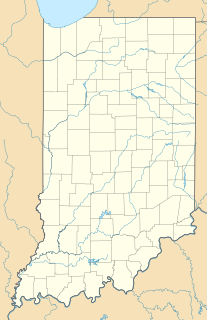 W
WTivoli Theater was a historic theatre building located at Mishawaka, St. Joseph County, Indiana. It was built in 1924–1925, and was a two-story, brick building with a facade featuring terra cotta ornamentation, a massive central arched window, and decorative art glass. The auditorium seated 1,500 patrons. The building consisted of three storefronts and the auditorium and lobby entrance, and office on the second floor. It was demolished in 2005.
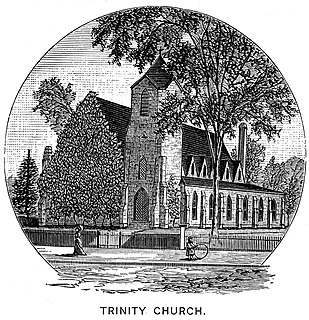 W
WTrinity Episcopal Church was a historic church located at 48 Main Street in Pawtucket, Rhode Island. Built by the Episcopalians, the building was sold to the Catholics in 1977 and became the St. George Maronite Catholic Church within the Diocese of Providence. The church burned down in 2005, and was not rebuilt.
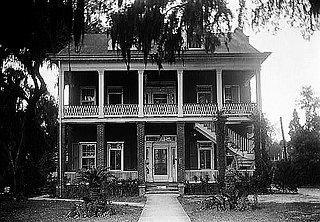 W
WTullis-Toledano Manor, also known as, the Toledano-Philbrick-Tullis House, was a red-clay brick mansion on the Mississippi Gulf Coast in Biloxi. It was considered an example of Greek Revival architecture. The mansion was added to the National Register of Historic Places in 1976 and was destroyed by Hurricane Katrina in 2005.
 W
WThe Wakefield Rattan Company was the world's leading manufacturer of furniture and objects made from rattan in the second half of the 19th century. Founded by Cyrus Wakefield in 1851 in South Reading, Massachusetts, the company perfected machinery for working with rattan, developing looms for weaving chair seats and mats. The company's products also included wicker furniture and baby carriages. The company also successfully found uses for previously wasted portions of the plant, using shavings to create baling fabric and floor coverings. Its products were available throughout the United States.
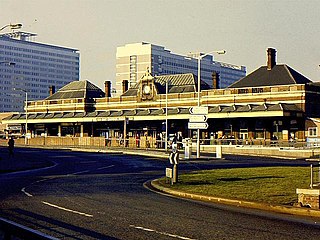 W
WWettern House was a high rise building next to East Croydon station in Croydon. Originally built in 1963, two years before the County Borough of Croydon disbanded into the London Borough of Croydon, it was demolished in November 2005 to make way for what would become Ruskin Square. Before demolition, the building had 12 floors and a structural height of 38 metres (125 ft). Its demolition was part of the Croydon Vision 2020 regeneration planning for a new generation of buildings.
 W
WWhite Water Landing was a log flume water ride at Cedar Point amusement park in Sandusky, Ohio. It opened in 1982 and was located in the Frontier Town section of the park near Mean Streak adjacent to the Cedar Point & Lake Erie Railroad. The water ride last operated on October 30, 2005, and it was replaced by Maverick in 2007.
 W
WThe Windsor Tower was an office building in the financial center of Madrid, Spain. Built in 1979, it was 106 m high and had 32 floors of which 29 were above ground level and 3 below, thus ranking it as the eighth tallest building in Madrid. The building was gutted by a huge fire on February 12, 2005, and partially collapsed; it has since been demolished.
 W
WThe Zip Feed Tower was a grain elevator and feed mill in Sioux Falls, South Dakota. At 202 feet it was the tallest occupiable structure in South Dakota from its construction in 1956–57 until its demolition in December 2005. The mill closed in 2000 and in 2005 was scheduled for demolition to make way for office and retail space.